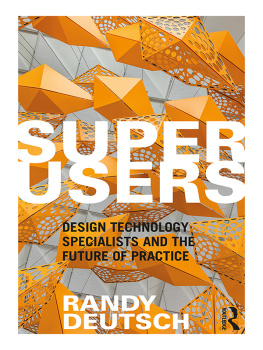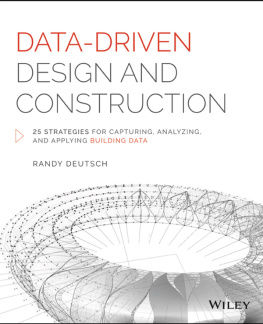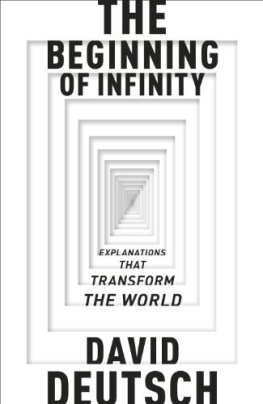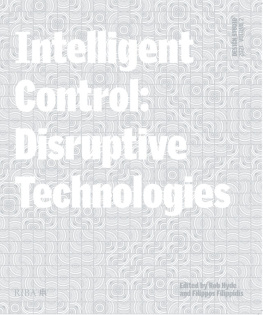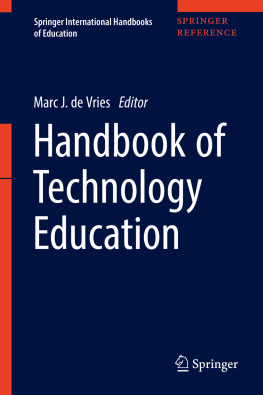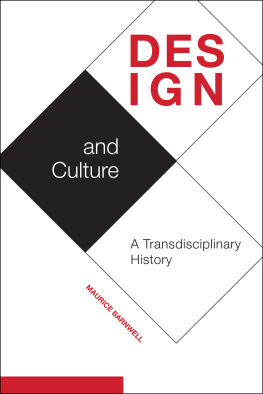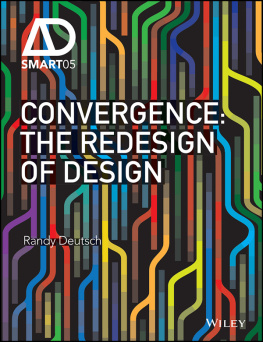Superusers are actually this generations version of the generalist architect.
Scott Crawford, Principal, LMN Architects
In this book, Randy has identified a class of people who are the harbingers of a new era of building.
Ian Keough, father of Dynamo, CEO of Hypar, from the books Foreword
Superusers
Design technology is changing both architectural practice and the role of the architect and related design professionals. With new technologies and work processes appearing every week, how can practitioners be expected to stay on top and thrive? In a word, Superusers.
Superusers: Design Technology Specialists and the Future of Practice will help you identify who they are, the value they provide, and how you can attract and retain them, and become one; what career opportunities they have, what obstacles they face, and how to lead them. Written by Randy Deutsch, a well-known expert in the field, this is the first-ever guide to help current and future design professionals to succeed in the accelerating new world of work and technology.
Providing proven, practical advice, the book features:
- Unique, actionable insights from design technology leaders in practice worldwide
- The impacts of emerging technology trends such as generative design, automation, AI, and machine learning on practice
- Profiles of those who provide 20% of the effort but achieve 80% of the results, and how they do it
- What will help firms get from where they are today to where they need to be, to survive and thrive in the new world of design and construction.
Revealing the dramatic impact of technology on current and future practice, Superusers shows what it means to be an architect in the 21st century. Essential reading for students and professionals, the book helps you plan for and navigate a fast-moving, uncertain future with confidence.
Randy Deutsch AIA, LEED AP is the Associate Director for Graduate Studies and Clinical Associate Professor at the University of Illinois Urbana-Champaign, USA, teaching and conducting research in design, professional practice, building technology, and digital technology. Randy is an international keynote speaker, workshop leader, and design technology authority. An architect responsible for the design of over 100 large, complex sustainable projects, Randy has been an Exec Ed program leader at Harvard GSD. He has written for DesignIntelligence, has been featured in ARCHITECT magazine and Architectural Record, and is the author of three books: Convergence: The Redesign of Design (2017) on the nature of the ongoing convergence of technology and work processes in the profession and industry; Data Driven Design and Construction: Strategies for Capturing, Analyzing and Applying Building Data (2015, translated into Chinese in 2019) on the innovative individuals and firms who are leveraging data to advance their practices; and BIM and Integrated Design: Strategies for Architectural Practice (2011, translated into Chinese in 2018) tracking the social and organizational impacts of the new technologies and collaborative work processes, among other publications. More at www.randydeutsch.com.
First published 2019
by Routledge
2 Park Square, Milton Park, Abingdon, Oxon OX14 4RN
and by Routledge
52 Vanderbilt Avenue, New York, NY 10017
Routledge is an imprint of the Taylor & Francis Group, an informa business
2019 Randy Deutsch
The right of Randy Deutsch to be identified as author of this work has been asserted by him in accordance with sections 77 and 78 of the Copyright, Designs and Patents Act 1988.
All rights reserved. No part of this book may be reprinted or reproduced or utilised in any form or by any electronic, mechanical, or other means, now known or hereafter invented, including photocopying and recording, or in any information storage or retrieval system, without permission in writing from the publishers.
Trademark notice: Product or corporate names may be trademarks or registered trademarks, and are used only for identification and explanation without intent to infringe.
British Library Cataloguing-in-Publication Data
A catalogue record for this book is available from the British Library
Library of Congress Cataloging-in-Publication Data
Names: Deutsch, Randy, author.
Title: Superusers : design technology specialists and the future of practice / Randy Deutsch.
Description: New York : Routledge, 2019. | Includes bibliographical references and index.
Identifiers: LCCN 2018042735| ISBN 9780815352594 (hb : alk. paper) | ISBN 9780815352600 (pb : alk. paper) | ISBN 9781351138987 (ebook)
Subjects: LCSH: Architectural practice. | DesignPractice. | ArchitectureTechnological innovations. | TechnologySocial aspects.
Classification: LCC NA1995. D59 2019 | DDC 720.28dc23
LC record available at https://lccn.loc.gov/2018042735
ISBN: 978-0-815-35259-4 (hbk)
ISBN: 978-0-815-35260-0 (pbk)
ISBN: 978-1-351-13898-7 (ebk)
Cover Photo Credit: TIM GRIFFITH for LMN Architects
To all those who share this path, an offering from a fellow traveler
This book could never have been realized without the distinctive voices of the Superusers themselves featured herein. I wholeheartedly thank Ian Keough for his forward-thinking Foreword; Shane Burger, Matthew Krissel, Stephen Van Dyck, Scott Crawford, Jordan Billingsley, Ana Garcia Puyol, Cory Brugger, Ryan Cameron, Hilda Espinal, Brian Ringley, Dan Anthony, Hiram Rodriguez, Fernando Araujo Superusers all for their selfless contributions and sharing of insights, and for serving themselves through their words and actions as exemplars of the design technology leadership described in these pages. This book wouldnt exist without them. For my Routledge (and Taylor & Francis) publishing team: a hearty thanks to Fran Ford, Publisher, Architecture, and to Jennifer Schmidt, Senior Editor, Architecture who immediately recognized the promise in the books premise and championed the proposal to fruition; to Trudy Varcianna, Senior Editorial Assistant, Architecture for her always attentive assistance and responsiveness throughout; to David Moore, Editorial Assistant Built Environment, Architecture. Lastly, for his assistance in coming up with and completing the diagrams that grace this book, Matthew Ross, appropriately enough at the time of this writing an architectural studies major with a computer science minor. He has big goals for his future.
At this moment, we are at the confluence of a healthy economy and the growing existential crisis of the architectural profession considering its relationship to automation. The pattern that has taken hold during the last several economic cycles has become increasingly clear. When the economy is healthy, venture capital is unlocked for startups to solve specific problems in industry, and architecture firms begin to invest in research and development, loosening the requirement that all explorations be specifically project driven. The result of this loosening is the creation of an environment in which Superusers who seek to automate our industry create the tools and processes which push us forward.
Many who read this book will be scared by the description of the Superuser. Superusers understand the reality that much of what we do in architectural practice can and should be automated, but they work in a profession which has its roots in an artistic tradition spanning hundreds of years. This tradition assumes, I would argue erroneously, that the act of design is irreducibly human. What Superusers have identified is that, in an environment of ever-shrinking fees, the only path to our salvation is through automation. And any discussion of automation implies the reduction of the human workforce. The Superuser will be seen by some as a direct challenge to their livelihood. This natural response, which is historically shortsighted, would come as a surprise to a Superuser. Because Superusers dont often self-identify. From their perspective, theyre just having fun solving challenges and saving people time.

